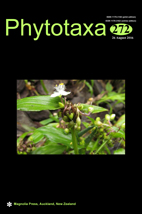Abstract
Medlinella amphoroidea gen. et sp. nov. is described from the dorsal neck skin of loggerhead sea turtles (Caretta caretta). The presence of girdle septa, multiple copulae, and the marine epizoic habitat of Medlinella amphoroidea are characteristic features shared with many species in the similar Tripterion, Chelonicola, and Poulinea genera. The semi-lanceolate valve shape, the asymmetric valve face with distinct dorsal and ventral striae, and the volate pore occlusions distinguish Medlinella from these genera. Medlinella amphoroidea accounted for up to 50% of all diatom valves on the skin of examined loggerhead turtles. Examination of the type slides of Tripterion kalamensis and T. philoderma for comparative purposes revealed morphological features that were either insufficiently or incorrectly described in the original publications. Our observations confirm that T. philoderma lacks septa and therefore does not conform to the genus description of Tripterion. The description of cingulum structure in Tripterion kalamensis is amended to identify multiple porose copulae that are open at one end. While the description of Medlinella creates another monotypic genus within a group of similar marine epizoic genera, we feel the novel character state (volate occlusions) present in this taxon is significant. Clearly, however, further phylogenetic analysis of morphological, or the development of molecular characters in the group of similar genera is required.

